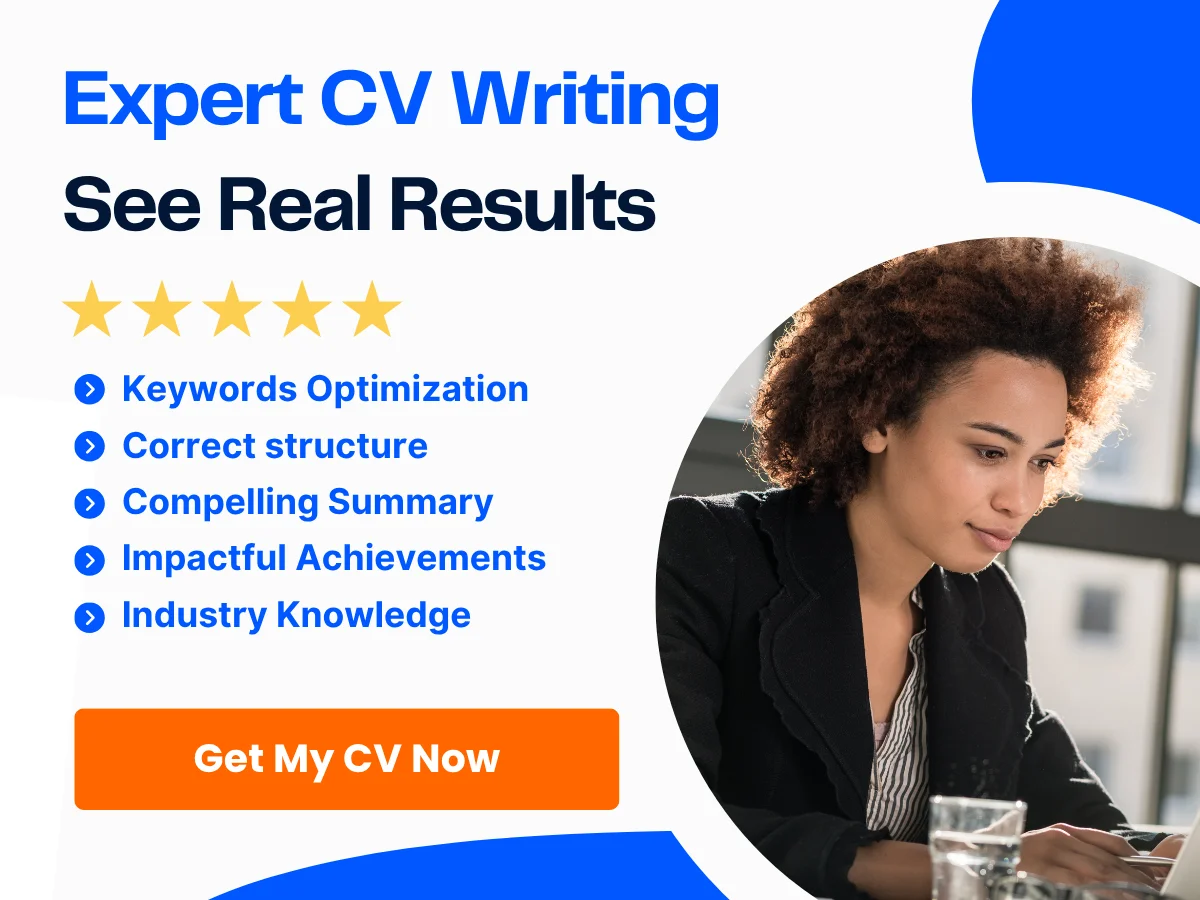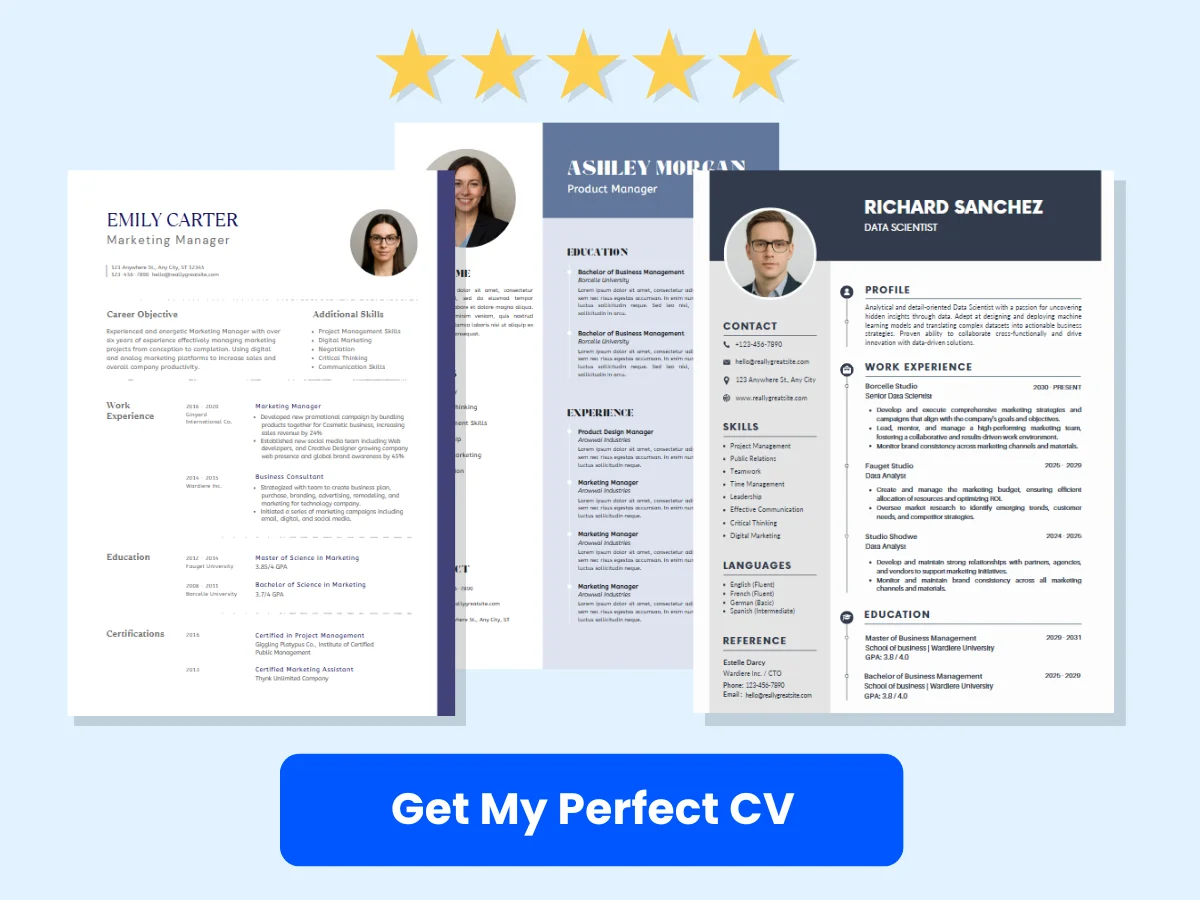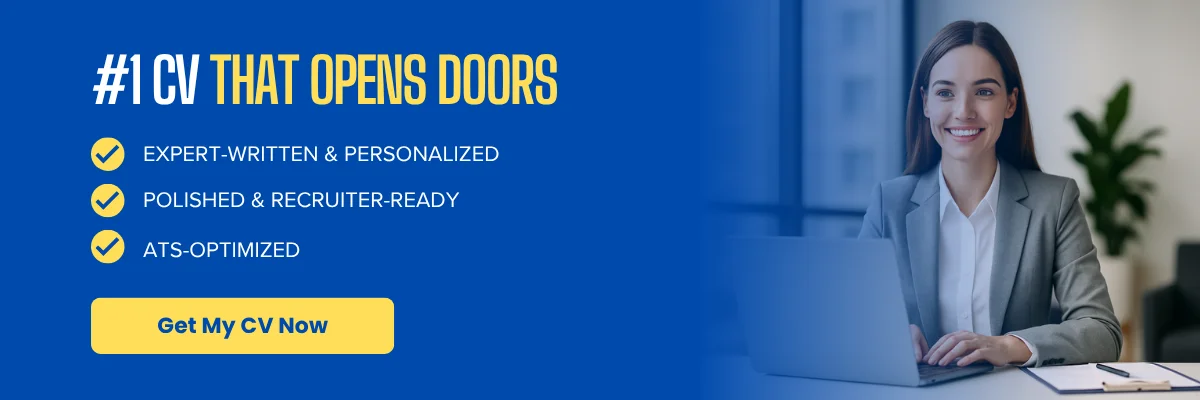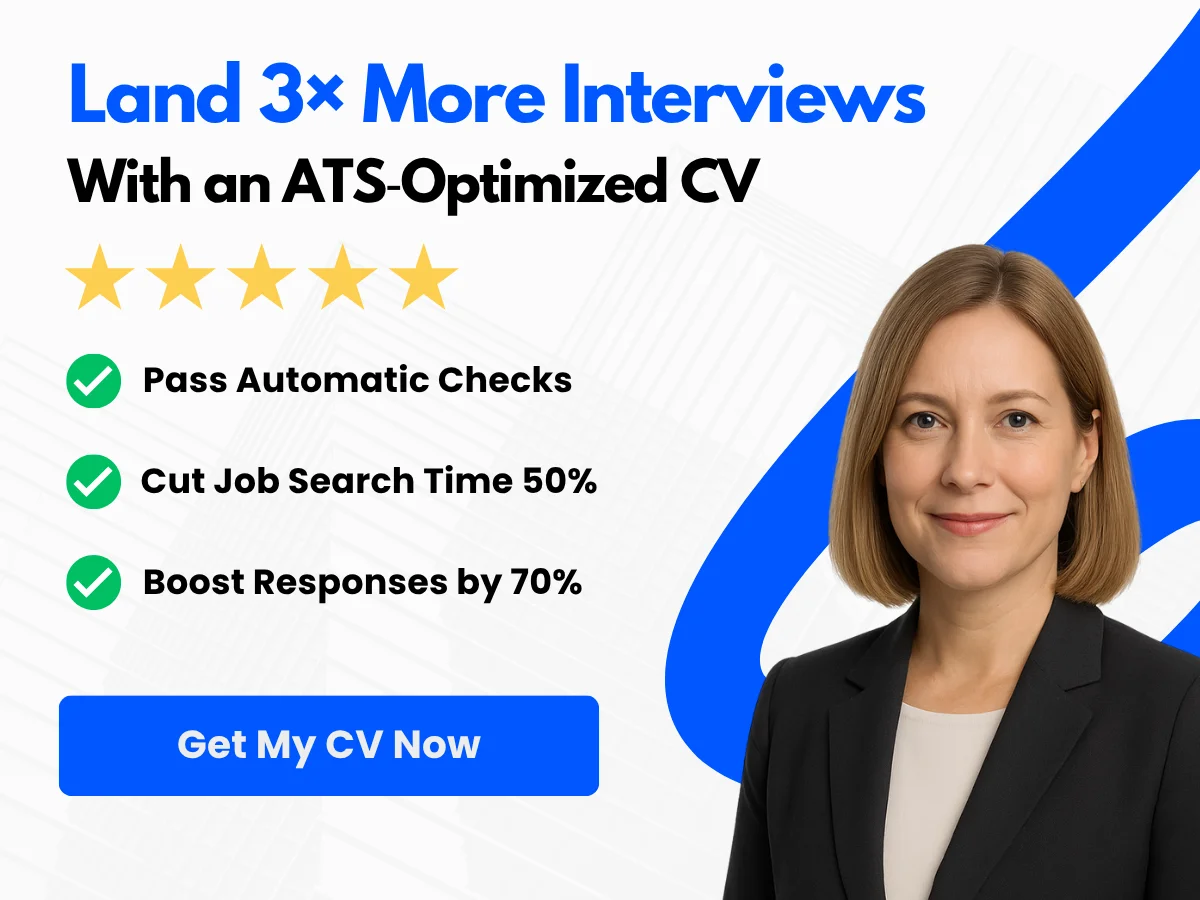Securing a job interview is a significant milestone in the job search process, but the journey doesn’t end there. In fact, one of the most crucial steps often comes weeks after the interview itself: the follow-up email. Sending a thoughtful follow-up can reinforce your interest in the position, showcase your professionalism, and keep you top of mind for hiring managers. However, timing and content are key—especially when you’re reaching out five weeks post-interview.
In this article, we’ll explore the importance of following up after an interview, particularly at the five-week mark, and provide you with actionable tips to craft an effective email. You’ll learn how to strike the right balance between persistence and professionalism, what to include to make your message stand out, and how to navigate potential challenges. Whether you’re eager to express your continued interest or seeking closure, our insights will empower you to make a lasting impression and enhance your chances of landing that coveted job offer.
Exploring the Purpose of a Follow-Up Email
After an interview, the waiting game can be one of the most challenging aspects of the job search process. You may have left the interview feeling confident, but as the days turn into weeks, uncertainty can creep in. This is where a well-crafted follow-up email comes into play, especially if you’re reaching out five weeks after your interview. Understanding the purpose of this email is crucial to ensuring it serves its intended function effectively. We will explore three primary purposes of a follow-up email: reinforcing your interest, demonstrating professionalism, and keeping your candidacy top of mind.
Reinforcing Your Interest
One of the primary reasons for sending a follow-up email is to reinforce your interest in the position. By reaching out, you remind the hiring manager of your enthusiasm for the role and the company. This is particularly important if a significant amount of time has passed since your interview. A well-timed follow-up can reignite the hiring manager’s memory of your qualifications and the positive impression you made during the interview.
When crafting your email, consider including specific details from your interview that highlight your interest. For example:


“I am still very excited about the opportunity to join [Company Name] as a [Job Title]. Our discussion about [specific project or value discussed] resonated with me, and I believe my skills in [specific skills or experiences] would allow me to contribute effectively to your team.”
This approach not only reiterates your interest but also shows that you were engaged during the interview and are genuinely invested in the role. It’s a subtle reminder that you are not just looking for any job, but that you are specifically interested in this position and this company.
Demonstrating Professionalism
Sending a follow-up email five weeks after your interview also demonstrates professionalism. In the competitive job market, professionalism can set you apart from other candidates. A follow-up email shows that you are proactive and respectful of the hiring process. It indicates that you understand the importance of communication and are willing to take the initiative to stay in touch.
In your email, maintain a professional tone and structure. Start with a polite greeting, express gratitude for the opportunity to interview, and acknowledge the time that has passed. For instance:
“Dear [Hiring Manager’s Name],
I hope this message finds you well. I wanted to take a moment to thank you once again for the opportunity to interview for the [Job Title] position on July 1, 2025. I appreciate the time you and your team took to discuss the role and the exciting projects at [Company Name].”

By expressing gratitude, you not only show respect for the interviewers’ time but also reinforce your professionalism. This can leave a lasting impression, as hiring managers often remember candidates who exhibit courtesy and respect throughout the hiring process.
Keeping Your Candidacy Top of Mind
Another critical purpose of a follow-up email is to keep your candidacy top of mind. After five weeks, it’s possible that the hiring manager has moved on to other candidates or projects. A follow-up email serves as a gentle reminder of your application and can help ensure that you remain in their thoughts as they make their final decisions.
In your email, you can briefly inquire about the status of your application. However, it’s essential to do this in a way that is respectful and not pushy. For example:
“I understand that the hiring process can take time, and I appreciate the effort that goes into selecting the right candidate. If possible, I would love to hear any updates regarding my application status.”
This approach shows that you are interested in the outcome without coming across as impatient. It also opens the door for the hiring manager to provide you with any updates, which can be valuable information as you continue your job search.


Crafting Your Follow-Up Email
Now that we’ve explored the purposes of a follow-up email, let’s discuss how to craft one that effectively serves these objectives. Here are some key components to include:
- Subject Line: Keep it clear and concise. Something like “Follow-Up on [Job Title] Interview” works well.
- Personalized Greeting: Address the hiring manager by name to add a personal touch.
- Express Gratitude: Thank them for the opportunity to interview and for their time.
- Reinforce Your Interest: Mention specific aspects of the role or company that excite you.
- Inquire About Status: Politely ask for any updates regarding your application.
- Closing Statement: Reiterate your appreciation and express your hope to hear from them soon.
Here’s a sample follow-up email that incorporates these elements:
Subject: Follow-Up on [Job Title] Interview
Dear [Hiring Manager’s Name],
I hope this message finds you well. I wanted to take a moment to thank you once again for the opportunity to interview for the [Job Title] position on July 1, 2025. I appreciate the time you and your team took to discuss the role and the exciting projects at [Company Name].
I am still very excited about the opportunity to join [Company Name] and contribute to [specific project or value discussed]. I believe my skills in [specific skills or experiences] would allow me to add value to your team.

I understand that the hiring process can take time, and I appreciate the effort that goes into selecting the right candidate. If possible, I would love to hear any updates regarding my application status.
Thank you once again for your time and consideration. I look forward to the possibility of working together.
Best regards,
[Your Name]
[Your LinkedIn Profile or Contact Information]
By following these guidelines, you can create a follow-up email that not only serves its purpose but also enhances your professional image. Remember, the goal is to maintain a positive relationship with the hiring manager, regardless of the outcome of your application.
When to Send a Follow-Up Email
Ideal Timing: Why 5 Weeks?
Following up after a job interview is a crucial step in the job application process. While many candidates understand the importance of sending a thank-you email shortly after the interview, the timing of a follow-up email five weeks later can be equally significant. But why exactly five weeks?
Five weeks is a strategic timeframe that allows you to strike a balance between showing continued interest in the position and respecting the hiring manager’s time. By this point, the interview process may have progressed, and the hiring team may have made decisions regarding candidates. Sending a follow-up email at this juncture demonstrates your enthusiasm for the role while also acknowledging that the hiring process can be lengthy.


Moreover, this timing allows you to reflect on your interview performance and the insights you gained during the process. It gives you the opportunity to reiterate your qualifications and express your eagerness to contribute to the company. A well-timed follow-up can keep you fresh in the minds of the hiring team, especially if they are still deliberating on candidates.
Situations That May Affect Timing
While five weeks is generally an ideal timeframe for a follow-up email, there are several situations that may affect when you should reach out. Understanding these scenarios can help you tailor your approach and ensure your follow-up is appropriate and effective.
- Company Timeline: If the company has indicated a specific timeline for their hiring process, it’s essential to respect that. For instance, if they mentioned that they would be making decisions in six weeks, it may be wise to wait until that timeframe has passed before sending your follow-up.
- Industry Norms: Different industries have varying hiring practices. In fast-paced sectors like tech or sales, decisions may be made more quickly, while in academia or government roles, the process can take longer. Researching the norms in your industry can help you gauge the right timing for your follow-up.
- Personal Circumstances: If you have had any significant changes in your situation since the interview—such as receiving another job offer or a change in your availability—this may prompt you to reach out sooner. In such cases, it’s important to communicate your situation clearly and professionally.
- Communication from the Employer: If the employer has reached out to you with updates or additional questions, this may alter your timing. If they have expressed that they are still considering candidates, a follow-up email can be a good way to remind them of your interest.
Signs You Should Send a Follow-Up Email
Knowing when to send a follow-up email can sometimes be challenging. Here are some signs that indicate it may be time to reach out:
- After the Specified Timeframe: If the hiring manager mentioned a specific timeframe for making a decision, and that time has passed without any communication, it’s appropriate to send a follow-up email. This shows your proactive nature and continued interest in the position.
- After a Significant Event: If there have been any significant developments in the company or industry—such as a merger, acquisition, or major product launch—this could be a good reason to reach out. You can express your interest in how these changes might impact the role you interviewed for.
- When You Have New Information: If you have gained new qualifications, completed a relevant project, or received an award since your interview, this is an excellent opportunity to share that information in your follow-up email. It can reinforce your candidacy and demonstrate your commitment to professional growth.
- When You Feel Uncertain: If you left the interview feeling uncertain about your performance or the outcome, a follow-up email can help clarify your standing. You can express your enthusiasm for the role and ask if there are any updates regarding your application status.
- When You Have a Connection: If you have established a rapport with someone at the company—whether it’s the hiring manager or another team member—reaching out can be beneficial. A personal connection can make your follow-up more impactful and memorable.
Crafting Your Follow-Up Email
Once you’ve determined that it’s the right time to send a follow-up email, the next step is crafting a message that is professional, concise, and engaging. Here are some tips to help you create an effective follow-up email:


- Subject Line: Keep your subject line clear and straightforward. Something like “Follow-Up on [Position Title] Interview” is effective and to the point.
- Personalize Your Message: Begin your email by addressing the hiring manager by name. Reference specific details from your interview to remind them of your conversation and to show that you are genuinely interested in the position.
- Express Gratitude: Thank the hiring manager for the opportunity to interview and for their time. Acknowledging their efforts can leave a positive impression.
- Reiterate Your Interest: Clearly express your continued interest in the position and the company. You can mention what excites you about the role and how you believe you can contribute to the team.
- Provide Updates: If applicable, share any new information that may strengthen your candidacy, such as recent accomplishments or relevant skills you’ve developed since the interview.
- Close Professionally: End your email with a professional closing, expressing your hope to hear back soon. Include your contact information to make it easy for them to reach you.
Example Follow-Up Email
Here’s a sample follow-up email to illustrate how you can structure your message:
Subject: Follow-Up on Marketing Manager Interview
Dear [Hiring Manager's Name],
I hope this message finds you well. I wanted to take a moment to thank you once again for the opportunity to interview for the Marketing Manager position at [Company Name] five weeks ago. I truly enjoyed our conversation and learning more about the innovative projects your team is working on.
I am writing to express my continued interest in the role and to inquire if there have been any updates regarding my application status. I am very excited about the possibility of contributing to [Company Name] and believe my experience in digital marketing and project management aligns well with the goals of your team.
Since our interview, I have completed a certification in advanced digital marketing strategies, which I believe would further enhance my ability to contribute effectively to your team. I am eager to bring my skills in data analysis and campaign optimization to [Company Name].
Thank you once again for your time and consideration. I look forward to the possibility of working together and hope to hear from you soon.
Best regards,
[Your Name]
[Your Phone Number]
[Your LinkedIn Profile or Website]
By following these guidelines and understanding the nuances of timing, you can craft a follow-up email that not only reinforces your candidacy but also demonstrates your professionalism and enthusiasm for the role. Remember, the goal is to keep the lines of communication open while showcasing your value as a potential employee.
Crafting the Perfect Follow-Up Email
Subject Line: Capturing Attention
The subject line of your follow-up email is your first opportunity to make an impression. It should be concise, clear, and engaging enough to encourage the recipient to open it. A well-crafted subject line can set the tone for the entire email and can significantly impact whether your message gets read or ignored.
Here are some effective strategies for creating a compelling subject line:
- Be Specific: Instead of a generic subject line like “Follow-Up,” try something more specific, such as “Thank You for the Opportunity – [Your Name].” This immediately informs the recipient about the content of the email.
- Include the Position Title: Mentioning the job title can help jog the memory of the interviewer. For example, “Following Up on My Application for the Marketing Manager Position.”
- Keep It Short: Aim for 6-10 words. A concise subject line is easier to read and less likely to be truncated in the recipient’s inbox.
- Use Action Words: Words like “Thank You,” “Follow-Up,” or “Next Steps” can create a sense of urgency and encourage the recipient to engage with your email.
Example subject lines include:


- “Thank You for the Interview Opportunity – [Your Name]”
- “Following Up on My Interview for the [Job Title] Position”
- “Excited About the Next Steps – [Your Name]”
Opening Paragraph: Reintroducing Yourself
The opening paragraph of your follow-up email should serve as a friendly reminder of who you are and the context of your previous interaction. This is especially important if the interviewer has conducted multiple interviews and may not immediately recall your conversation.
Start with a warm greeting and express your appreciation for the opportunity to interview. Mention the date of the interview and the position you applied for to provide context. Here’s a template you can use:
Dear [Interviewer’s Name],
I hope this message finds you well. I wanted to take a moment to thank you for the opportunity to interview for the [Job Title] position on [Date]. I truly enjoyed our conversation and learning more about [Company Name] and the exciting projects your team is working on.
This opening not only reintroduces you but also sets a positive tone for the rest of the email. It shows that you are courteous and professional, which are essential traits in any candidate.
Middle Paragraph: Reiterating Your Interest and Fit
The middle paragraph is your chance to reiterate your interest in the position and highlight why you are a great fit for the role. This is particularly important if it has been five weeks since your interview, as it reinforces your enthusiasm and keeps you top of mind for the interviewer.
Begin by expressing your continued interest in the position. You can then briefly summarize key points from your interview that align with the job requirements or the company’s goals. This not only reminds the interviewer of your qualifications but also demonstrates that you have been reflecting on the conversation.
Here’s how you might structure this paragraph:
Since our conversation, I have been reflecting on how my skills in [specific skill or experience] align with the goals of [Company Name]. I am particularly excited about [specific project or value discussed during the interview], and I believe my experience in [related experience] would allow me to contribute effectively to your team. I am very enthusiastic about the possibility of joining [Company Name] and contributing to [specific goal or project].
By providing specific examples, you reinforce your qualifications and show that you are genuinely interested in the role. This is also an opportunity to address any concerns that may have arisen during the interview or to clarify any points that you feel were not fully communicated.
Closing Paragraph: Expressing Gratitude and Next Steps
In the closing paragraph, it’s essential to express gratitude once again and to inquire about the next steps in the hiring process. This shows that you are proactive and eager to move forward while also being respectful of the interviewer’s time and process.
Here’s a template for your closing paragraph:
Thank you once again for the opportunity to interview for the [Job Title] position. I appreciate the time you and your team took to discuss my application. If there are any updates regarding my application status or if you need any further information from my side, please feel free to reach out. I look forward to the possibility of working together and contributing to [Company Name].
Warm regards,
[Your Name]
[Your LinkedIn Profile or Contact Information]
In this closing, you not only express gratitude but also invite further communication, which can help keep the dialogue open. Including your contact information ensures that the interviewer can easily reach you if needed.
Final Tips for Your Follow-Up Email
As you craft your follow-up email, keep these additional tips in mind:
- Proofread: Spelling and grammatical errors can undermine your professionalism. Always proofread your email before sending it.
- Be Patient: If you don’t receive a response immediately, don’t panic. Hiring processes can take time, and your email may be one of many the interviewer is managing.
- Follow Up Again if Necessary: If you still haven’t heard back after another week or two, it’s acceptable to send a gentle follow-up email to check in on your application status.
By following these guidelines, you can craft a thoughtful and effective follow-up email that reinforces your candidacy and keeps you in the minds of your interviewers. Remember, the goal is to maintain a positive connection and demonstrate your enthusiasm for the opportunity.
Common Mistakes to Avoid
Following up after an interview is a crucial step in the job application process, especially when you’re reaching out five weeks later. While it’s important to express your continued interest in the position, there are several common pitfalls that candidates often fall into. Avoiding these mistakes can significantly enhance your chances of making a positive impression. Here are some key mistakes to steer clear of:
Being Too Pushy or Desperate
One of the most significant errors candidates make is coming across as overly pushy or desperate in their follow-up emails. It’s natural to feel anxious about the outcome of your interview, especially after waiting for several weeks. However, expressing this anxiety in your communication can be detrimental.
Instead of demanding an update or expressing frustration over the wait, frame your email in a way that shows your enthusiasm without pressure. For example:
“I hope this message finds you well. I wanted to follow up regarding my application for the [Job Title] position. I remain very excited about the opportunity to join [Company Name] and contribute to your team.”
This approach conveys your interest while respecting the hiring manager’s timeline. Remember, hiring processes can be lengthy due to various factors, including internal discussions and other candidates being interviewed. Patience is key.
Overly Lengthy Emails
Another common mistake is writing overly lengthy emails. While it’s important to convey your thoughts clearly, a long-winded message can overwhelm the recipient and dilute your main points. Hiring managers often have limited time to read through emails, especially if they are managing multiple candidates.
To avoid this, keep your follow-up email concise and to the point. Aim for a length of around 150-200 words. Here’s a structure you can follow:
- Greeting: Address the hiring manager by name.
- Express Gratitude: Thank them for the opportunity to interview.
- Reiterate Interest: Briefly mention your enthusiasm for the role.
- Request for Update: Politely ask if there are any updates regarding your application.
- Closing: Thank them again and express your hope to hear from them soon.
Here’s an example of a concise follow-up email:
Subject: Follow-Up on [Job Title] Interview
Dear [Hiring Manager’s Name],
I hope you are doing well. I wanted to take a moment to thank you for the opportunity to interview for the [Job Title] position on [Date]. I enjoyed our conversation and learning more about the exciting projects at [Company Name].
I am very enthusiastic about the possibility of joining your team and contributing to [specific project or goal discussed in the interview]. If there are any updates regarding my application status, I would greatly appreciate it if you could share them with me.
Thank you once again for your time, and I look forward to hearing from you soon.
Best regards,
[Your Name]
[Your LinkedIn Profile or Contact Information]
Generic or Impersonal Messages
Sending a generic or impersonal follow-up email is another mistake that can undermine your efforts. A cookie-cutter message that could apply to any job or company fails to demonstrate your genuine interest in the specific position and organization. Personalization is key to making your follow-up stand out.
To personalize your email, reference specific details from your interview or the company’s recent achievements. This shows that you are not only interested in the job but also invested in the company’s mission and culture. For instance:
“I was particularly intrigued by our discussion about [specific project or initiative] and how it aligns with my experience in [related experience]. I believe my skills in [specific skills] would be a great fit for your team.”
By including these personalized touches, you demonstrate that you are engaged and have taken the time to reflect on your interview and the company’s goals.
Neglecting to Proofread
Finally, one of the most critical mistakes candidates make is neglecting to proofread their follow-up emails. Spelling and grammatical errors can create a negative impression and suggest a lack of attention to detail. In a competitive job market, even minor mistakes can be enough to dissuade a hiring manager from considering you further.
Before hitting send, take the time to carefully review your email. Look for typos, grammatical errors, and awkward phrasing. It can also be helpful to read your email aloud or have a friend review it for clarity and professionalism. Here are some tips for effective proofreading:
- Take a Break: Step away from your email for a few minutes before reviewing it. This can help you see errors more clearly.
- Read Aloud: Hearing your words can help you catch mistakes that you might overlook when reading silently.
- Use Tools: Utilize grammar and spell-check tools, but don’t rely solely on them. They may miss context-specific errors.
By ensuring your email is polished and professional, you reinforce your candidacy and demonstrate your commitment to excellence.
Avoiding these common mistakes when following up five weeks after your interview can significantly enhance your chances of making a positive impression. By being patient, concise, personalized, and meticulous in your communication, you can effectively convey your continued interest in the position and keep your candidacy alive.
Sample Follow-Up Email Templates
After an interview, sending a follow-up email is a crucial step in the job application process. It not only shows your continued interest in the position but also reinforces your professionalism and communication skills. If you find yourself five weeks post-interview without any feedback, it’s time to reach out. Below are three sample follow-up email templates tailored for different scenarios you might encounter. Each template is designed to help you maintain a positive impression while seeking clarity on your application status.
Template 1: General Follow-Up
This template is ideal for a general follow-up when you haven’t received any updates since your interview. It’s polite, concise, and expresses your ongoing interest in the position.
Subject: Follow-Up on Interview for [Job Title]
Dear [Interviewer's Name],
I hope this message finds you well. I wanted to take a moment to thank you once again for the opportunity to interview for the [Job Title] position at [Company Name] on [Date of Interview]. I enjoyed our conversation and learning more about the exciting projects your team is working on.
I am writing to inquire about the status of my application. I remain very enthusiastic about the possibility of joining [Company Name] and contributing to [specific project or value discussed during the interview].
If there are any updates regarding my application or the hiring timeline, I would greatly appreciate it if you could share them with me. Thank you for your time, and I look forward to hearing from you soon.
Best regards,
[Your Name]
[Your LinkedIn Profile or Website]
[Your Phone Number]
This template is straightforward and respectful, allowing you to express your interest without coming across as pushy. Remember to personalize it with specific details from your interview to make it more engaging.
Template 2: Follow-Up with Additional Information
If you have additional information that could strengthen your application—such as a new project, a relevant certification, or an article you wrote that relates to the job—this template allows you to share that while following up.
Subject: Follow-Up and Additional Information for [Job Title]
Dear [Interviewer's Name],
I hope you are doing well. I wanted to follow up regarding my application for the [Job Title] position that I interviewed for on [Date of Interview]. I am still very excited about the opportunity to join [Company Name] and contribute to your team.
Since our conversation, I have been reflecting on our discussion about [specific topic discussed in the interview]. I recently completed [describe the new project, certification, or relevant experience], which I believe aligns well with the goals of your team. I have attached [any relevant documents or links] for your review.
If there are any updates regarding my application status or if you need any further information from my side, please let me know. Thank you for considering my application, and I look forward to the possibility of working together.
Warm regards,
[Your Name]
[Your LinkedIn Profile or Website]
[Your Phone Number]
This template not only serves as a follow-up but also positions you as a proactive candidate who is eager to contribute. By providing additional information, you can reinforce your qualifications and keep the conversation going.
Template 3: Follow-Up After No Response
If you’ve sent a previous follow-up email and still haven’t received a response, this template is designed to gently remind the interviewer of your application while maintaining professionalism.
Subject: Follow-Up on [Job Title] Application
Dear [Interviewer's Name],
I hope this email finds you well. I wanted to follow up on my previous email regarding the [Job Title] position I interviewed for on [Date of Interview]. I understand that the hiring process can be quite busy, and I appreciate the time and effort that goes into selecting the right candidate.
I remain very interested in the opportunity to join [Company Name] and contribute to [specific project or value discussed during the interview]. If there are any updates regarding my application status or the timeline for the hiring process, I would be grateful if you could share them with me.
Thank you for your attention, and I look forward to your response.
Best wishes,
[Your Name]
[Your LinkedIn Profile or Website]
[Your Phone Number]
This template is respectful and acknowledges the interviewer’s busy schedule while still expressing your eagerness to hear back. It’s important to strike a balance between persistence and professionalism, and this template does just that.
Tips for Crafting Your Follow-Up Email
While the templates provided are a great starting point, here are some additional tips to ensure your follow-up email is effective:
- Be Concise: Keep your email brief and to the point. Hiring managers are often busy, so a clear and concise message is more likely to be read and appreciated.
- Personalize Your Message: Reference specific details from your interview to remind the interviewer of your conversation and demonstrate your genuine interest in the role.
- Use a Professional Tone: Maintain a professional tone throughout your email. Avoid overly casual language and ensure your email is free of typos and grammatical errors.
- Be Patient: If you don’t receive a response immediately, give it some time. Hiring processes can be lengthy, and it’s important to be patient while waiting for feedback.
- Follow Up Once: If you’ve already sent a follow-up email, it’s generally best to wait for a response rather than sending multiple follow-ups. This shows respect for the interviewer’s time.
By utilizing these templates and tips, you can effectively navigate the follow-up process five weeks after your interview. Remember, the goal is to maintain a positive impression while seeking clarity on your application status. Good luck!
Advanced Tips for Effective Follow-Up Emails
Leveraging LinkedIn and Other Professional Networks
In today’s digital age, leveraging professional networks like LinkedIn can significantly enhance your follow-up strategy. After an interview, it’s not just about sending a follow-up email; it’s also about maintaining a professional presence online. Here are some effective ways to utilize LinkedIn and other networks:
- Connect with Interviewers: If you haven’t already, send a connection request to your interviewers on LinkedIn. Personalize your request by mentioning your recent interview and expressing your appreciation for the opportunity to connect. This not only keeps you on their radar but also shows your enthusiasm for the position.
- Engage with Their Content: After connecting, engage with their posts by liking, commenting, or sharing. This demonstrates your interest in the company and its culture. For instance, if they share an article about industry trends, you could comment with your insights or share how it relates to your interview discussion.
- Follow the Company Page: Make sure to follow the company’s LinkedIn page. This allows you to stay updated on their news, job postings, and other relevant information. You can reference this in your follow-up email, showing that you are proactive and genuinely interested in the company.
- Join Relevant Groups: Participate in LinkedIn groups related to your industry. This can help you network with other professionals and stay informed about industry trends, which can be beneficial in future conversations with the interviewers or hiring managers.
Using a Polite Tone and Professional Language
The tone and language of your follow-up email are crucial in making a positive impression. Here are some tips to ensure your communication is both polite and professional:
- Start with a Warm Greeting: Address the recipient by their name and use a friendly yet professional greeting. For example, “Dear [Interviewer’s Name],” or “Hello [Interviewer’s Name],” sets a respectful tone.
- Express Gratitude: Begin your email by thanking the interviewer for their time and the opportunity to learn more about the company. A simple statement like, “I appreciate the chance to interview for the [Job Title] position and enjoyed our conversation about [specific topic discussed]” can go a long way.
- Be Concise and Clear: While it’s important to be polite, ensure your email is also concise. Avoid overly complex sentences or jargon that may confuse the reader. Use clear language to convey your message effectively.
- Avoid Negative Language: Even if you feel anxious about not hearing back, avoid expressing frustration or negativity in your email. Instead, focus on your enthusiasm for the role and your eagerness to contribute to the team.
- Close with Professionalism: End your email with a polite closing statement, such as “Thank you once again for your time and consideration. I look forward to hearing from you soon.” Sign off with “Best regards” or “Sincerely,” followed by your name.
Timing Your Follow-Up for Maximum Impact
Timing is a critical factor in the effectiveness of your follow-up email. Sending your email at the right moment can significantly influence how it is received. Here are some strategies to consider:
- Wait for the Right Duration: While it’s common to send a follow-up email within a week after the interview, waiting five weeks can be appropriate if you haven’t heard back. This shows patience and respect for the hiring process, which can often take longer than anticipated.
- Consider the Company’s Hiring Timeline: If you know the company is in the midst of a busy hiring season or if they mentioned a specific timeline during your interview, adjust your follow-up accordingly. For example, if they indicated they would be making decisions in six weeks, it might be best to wait until that timeframe has passed before reaching out.
- Send Emails During Business Hours: Aim to send your follow-up email during business hours, ideally mid-morning or early afternoon. This increases the likelihood that your email will be seen and read promptly. Avoid sending emails late in the day or on weekends, as they may get buried in the recipient’s inbox.
- Be Mindful of Holidays and Events: If your follow-up coincides with a holiday or major company event, consider delaying your email. People are often busy during these times, and your message may not receive the attention it deserves.
- Follow Up Again if Necessary: If you still haven’t received a response after your initial follow-up, it’s acceptable to send a second follow-up email. Wait another week or two before doing so, and keep the tone polite and professional. You might say, “I wanted to follow up once more regarding the [Job Title] position. I remain very interested and would appreciate any updates you can share.”
By leveraging LinkedIn and other professional networks, using a polite tone and professional language, and timing your follow-up strategically, you can enhance your chances of making a lasting impression after your interview. Remember, the goal of your follow-up email is not just to inquire about the status of your application but also to reinforce your interest in the position and the company. With these advanced tips, you can craft a follow-up email that stands out and keeps you top of mind for the hiring team.
What to Do If You Don’t Get a Response
Exploring Possible Reasons for No Response
After an interview, it’s common to feel anxious about the outcome, especially if you haven’t received a response after five weeks. Understanding the potential reasons for this lack of communication can help you manage your expectations and plan your next steps effectively.
- Hiring Process Delays: Companies often have lengthy hiring processes, especially if they are interviewing multiple candidates. Internal discussions, budget approvals, or changes in hiring priorities can all contribute to delays.
- Decision-Making Complexity: In many organizations, hiring decisions involve multiple stakeholders. If the decision-makers are not aligned or if there are differing opinions about candidates, this can prolong the process.
- Candidate Pool Size: If the company received a large number of applications, they may be taking extra time to evaluate each candidate thoroughly. This is particularly true for competitive positions.
- Communication Gaps: Sometimes, the lack of response is simply due to poor communication practices within the organization. Emails can get lost, or the hiring manager may forget to update candidates.
- Changes in Company Needs: Business needs can change rapidly. A position that seemed critical at the time of your interview may no longer be a priority, leading to a halt in the hiring process.
Recognizing these factors can help you remain patient and composed as you navigate this uncertain period. It’s essential to remember that a lack of response does not necessarily reflect your qualifications or the impression you made during the interview.
When to Send a Second Follow-Up
If you haven’t received a response after your initial follow-up email, it may be appropriate to send a second follow-up. Timing is crucial here; you want to strike a balance between being persistent and respectful of the hiring manager’s time.
Here are some guidelines to consider when deciding to send a second follow-up:
- Wait at Least Two Weeks: After your first follow-up, give the company at least two weeks to respond. This allows them ample time to make decisions and communicate with candidates.
- Assess the Situation: If you have received any communication from the company since your interview, even if it was not a direct response to your follow-up, consider that in your decision. If they mentioned a timeline for decisions, wait until that period has passed.
- Be Concise and Professional: Your second follow-up should be brief and to the point. Express your continued interest in the position and politely inquire about the status of your application.
Here’s an example of a second follow-up email:
Subject: Follow-Up on [Job Title] Interview
Dear [Hiring Manager's Name],
I hope this message finds you well. I wanted to follow up regarding my application for the [Job Title] position I interviewed for on [Date]. I remain very enthusiastic about the opportunity to join [Company Name] and contribute to your team.
If there have been any updates regarding my application status, I would greatly appreciate any information you could share. Thank you for your time, and I look forward to hearing from you soon.
Best regards,
[Your Name]
[Your LinkedIn Profile] (if applicable)
[Your Phone Number]
Sending a second follow-up can demonstrate your continued interest in the position while also showing that you respect the hiring manager’s time. However, if you still do not receive a response after this attempt, it may be best to move on.
Moving Forward: Other Job Opportunities and Networking
While waiting for a response can be frustrating, it’s essential to keep your job search active. Here are some strategies to consider as you move forward:
- Continue Applying: Don’t put all your eggs in one basket. Continue to search for and apply to other job opportunities. This not only increases your chances of landing a position but also helps you maintain a positive mindset.
- Leverage Your Network: Reach out to your professional network to let them know you are actively seeking new opportunities. Networking can often lead to job openings that aren’t advertised publicly. Attend industry events, join professional groups, and connect with former colleagues on platforms like LinkedIn.
- Enhance Your Skills: Use this time to invest in your professional development. Consider taking online courses, attending workshops, or obtaining certifications relevant to your field. This not only makes you a more attractive candidate but also helps you stay engaged and motivated.
- Stay Positive: Job searching can be a rollercoaster of emotions. It’s important to stay positive and resilient. Surround yourself with supportive friends and family, and don’t hesitate to seek encouragement from your network.
While waiting for a response after an interview can be challenging, understanding the reasons for the delay, knowing when to follow up, and actively pursuing other opportunities can help you navigate this period more effectively. Remember, the job search process is often unpredictable, and maintaining a proactive approach will serve you well in the long run.
Follow-up emails are a crucial part of the job application process, especially five weeks after your interview. This timeframe allows you to reconnect without appearing overly eager while reinforcing your interest in the position. Here are the key takeaways from the article:
- Importance of Timing: Sending a follow-up email five weeks post-interview strikes a balance between showing enthusiasm and respecting the employer’s timeline.
- Purpose of the Email: Use your follow-up to reaffirm your interest, demonstrate professionalism, and keep your candidacy fresh in the interviewer’s mind.
- Crafting Your Message: Ensure your email has a compelling subject line, a clear introduction, a middle section that reiterates your fit for the role, and a gracious closing that outlines next steps.
- Avoid Common Pitfalls: Steer clear of being too pushy, sending lengthy messages, or using generic language. Always proofread to maintain professionalism.
- Responding to Silence: If you don’t receive a response, consider sending a second follow-up after a reasonable period, and remain open to exploring other opportunities.
A well-crafted follow-up email can significantly impact your job search. By applying these tips, you can effectively communicate your continued interest and professionalism, enhancing your chances of standing out in a competitive job market. Stay positive and persistent, and remember that every interaction is an opportunity to make a lasting impression.










